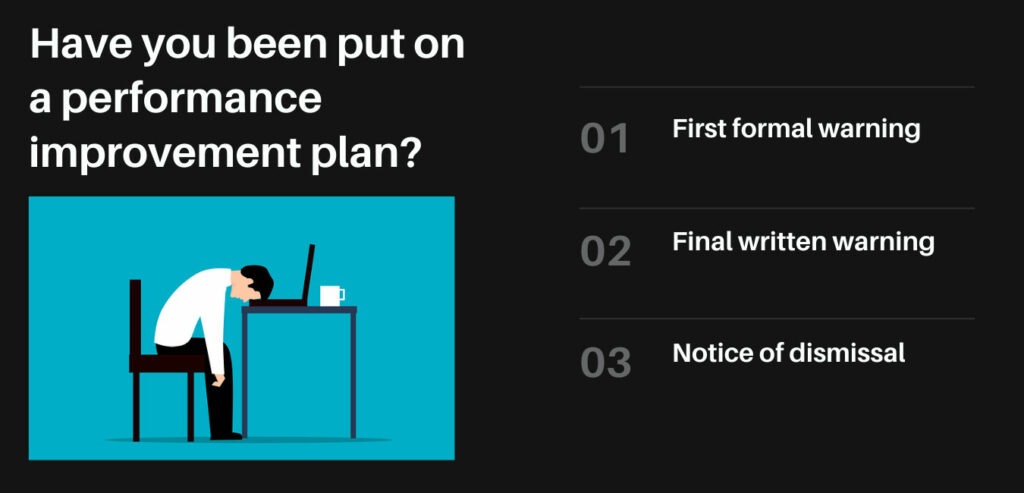Calculating your settlement can be tricky because every situation is different. Unfortunately, we can’t punch in a few numbers into a settlement calculator to arrive at the answer to life, the universe and everything…or a settlement figure. There are too many variable and contexts to produce a meaningful and reliable figure. However, this Settlement Calculator Guide has been written by a specialist employment solicitor to offer expert, actionable guidance on calculating a settlement, whether you’re being made redundant, you’re unfit to work, you are facing a disciplinary or a performance improvement procedure. Ready to start? Let’s do the maths …
UPDATED JANUARY 2025
How to Calculate Your Settlement Agreement
Step by Step Guide
Get your paperwork together
Get hold of all of the relevant paperwork so you can calculate your settlement. See the checklist below!
Settlement Agreement Document Checklist
- Last three months payslips.
- Employment Contract.
- Form P60 (this is the tax summary your employer gives you at the end of each tax year).
- Form P11D – this will show the taxable value of any contractual benefits in kind, such as a company car.
- Bonus scheme or rules.
- Long-term Incentive Plans (‘LTIPs’) or similar incentive scheme rules.
- Commission Scheme rules.
- Pension information.
- Share options, or Save as You Earn Scheme documents.
- Work/corporate gym membership terms.
- Redundancy Policy (this may contain details about an enhanced redundancy pay).
- Outplacement scheme (if your employer has this it may provide free or subsidised career support to help you find your next role).
- Ill-health benefits (if your settlement offer comes about because you are unfit to work).
- Any other contractual benefits.
- Any other benefits?
Looking to negotiate a better deal? Read our guide: How to Negotiate a Settlement Agreement.
Know your numbers!
Once you’ve got everything together you’re in a great place to work out the values of your pay and benefits, on a gross and net basis (i.e. before and after tax).

Double check and recalculate the settlement numbers.
Check your employer’s figures against yours.
Go direct to payroll if you need to and the pension provider. But be careful not to breach any instructions your employer has given, for example not to speak to anyone else. If that is the case, get permission first to be safe.
Check your notice entitlement.

Some employers may just look at the employment contract and go off that. They may be mistaken about your start date.
Check your start date and work out your statutory minimum notice entitlement – which is one week for each completed year up to a maximum of 12.
Then check your written employment contract, if you have one, to see what that says. If it’s more than the statutory minimum, that’s your entitlement.
Unless you’re guilty of a serious act of misconduct that would entitle your employer to dismiss you without notice, the first thing to do is check you’re getting paid your full notice.
Your employer may ask you to work your notice. If you’d prefer to leave sooner, this may be a negotiating point.
Summary: You should check (1) when you started (2) how many complete years services you’ve got (3) what your written employment contract says, if you’ve got one (4) when notice was properly served. If the contract says notice must be served in writing, and you were only told verbally, you may be able to argue notice has not yet been served.
Don’t forget the benefits you’ve lost (or will lose) if your employer pays in lieu.
If your employer is ending your employment without giving you notice (or full notice) and instead paying you in lieu, income tax and national insurance should be deducted (like normal pay).
Find out whether you are getting to keep your contractual benefits during the period you would have been employed had you worked your notice, or alternatively, if you are being paid a extra money to compensate you for not getting those benefits during what would have been your notice.
Add up your benefits, by looking at your last Form P11D, or check with payroll or the person in HR that deals with benefits and rewards. Extras like pension contributions, car allowances, private health cover, gym membership can significantly add up. Try and secure their continuation or ask for an agreed payment equal to the value over the notice period.
Tip: Some employment contracts may give the employer a right to end your employment without notice and only pay a payment in lieu of notice based on your basic pay.
Don’t forget holiday pay
You are entitled to be paid any holidays you’ve accrued but not taken, up to the termination date.
The minimum stautory entitlement to paid leave is 5.6 weeks a year. If you work 5 days a week that’s 28 days (inclusive of bank holidays). But you may be contractually entitled to more – check your employment contract. Some employees that work irregular hours or employees on part year contracts, e.g. term time only, might have their holiday calculated as a percentage top up rather than in days or weeks, in which case they should receive their holiday pay as a top up each time they are normally paid.
Employee Tip: If you’ve been prevented from taking your holidays by your employer, or you’ve been on long-term sick leave, you will likely be able to claim back-dated holidays, before the current holiday year, even if your employment contract says otherwise.
Calculate your entitlement in days (i.e. accrued but untaken holidays) and speak to your solicitor about how far you may be able to backdate.
Redundancy
Statutory Redundancy Pay Calculator
If you’re being made redundant, and you have two or more years’ service, you are entitled to at least statutory minimum redundancy payment.
The exact figure you are entitled to will depend on your length of service (in complete years), your age and weekly gross pay. Statutory redundancy pay is limited to 20 years service, and a weekly pay cap, which is currently £700 if you are made redundant on or after 6 April 2024.
Important note: A statutory redundancy entitlement is payable in addition to your contractual or statutory minimum notice entitlement.
Employee tip: Try our redundancy pay calculator that delivers a capped and uncapped redundancy payment figure.
Contractual Redundancy Pay
If your employer has an enhanced redundancy scheme you should be able to calculate the amount you will receive applying the scheme’s formula. If you’re not sure if there is enhanced scheme, or you think your employer have offered other employees an enhancement but not you, see if you can get some advice or intelligence from the trade union or employee representatives in place about custom and practice regarding redundancy payments.
Often, an enhanced scheme will be similar to the statutory formula but with improvements, for example, disapplying the cap regarding years services or weekly pay, or paying more weeks for each year of services than the statutory formulae provides for.
Employee Tip: Check your Staff Handbook for any redundancy policy.
Sickness and Ill-health Settlement Agreement Calculator
Permanent Health Insurance
If you’ve been offered a settlement because you’ve been sick and unable to work, check whether you’re entitled to Permanent Health Insurance (also known as income protection insurance or ‘PHI’). This kind of insurance is sometimes part of the benefits package you’re entitled to. The purpose of PHI is to provide an income while you are unable to work. The terms of PHI policies vary. Some say you need to be unfit to do your job, others say you need to be unfit to any work. They typically provide income protection at between 50% and 75% of your salary (and are intended for situations where an employee is unlikely to be able to work for a long time).
If you’ve been offered a settlement agreement you may be better off applying for PHI, if you are likely to be unfit to work for a while and you meet the policy requirements. PHI policies will cease to provide any benefits once someone ceases to be an employee. Pursing PHI and accepting a termination payment under a settlement agreement will normally be mutually exclusive.
Employee Tip: Speak to your employment solicitor about your options and get hold of the insurance policy wording.
Critical illness insurance cover and settlement agreements
Some employers provide critical illness cover. Generally, it will involve a lump sum payment, if the employee is diagnosed with a serious condition, such as cancer. If you’ve got this benefit get hold of the policy and speak to the insurer / broker.
It has been known for employers to offer a settlement agreement without informing the employee they could have made a claim for critical illness benefits. Once your employment has ended under the settlement agreement you will usually lose any entitlement to claim!
Employee Tip: If you’ve got critical illness speak to the insurer about whether you’re likely to be successful based on your health condition and find how much you could get, and when and how you need to make a claim. You can learn more about this cover here.
Ill-health retirement and ill-health pension benefits
Check whether you have these. Sometimes they are attached to your pension. Obtain the relevant policy or benefit wording. Much like PHI, these benefits can be extremely valuable and should not be given up by signing a settlement agreement without carefully weighing up the pros and cons. But be realistic as well. If you’re illness is not likely to be long-term it maybe you won’t fulfil the criteria to claim these benefits.
Poor Performance – Settlement Agreement Calculator

Sometimes, rather than go through a performance management procedure, or performance improvement plan (‘PIP’), your employer (or you) may decide to offer a settlement agreement. If that happens the value of your settlement may come down to:
-
Your notice entitlement
This is because even if you are dismissed for poor performance, unless you have been grossly negligent or guilty of gross misconduct, you will still be entitled to your contractual notice.
-
How long the process will take before your employer can dismiss you fairly?
If you have under two years’ service, your employer may decide to just serve notice or terminate your employment immediately and pay in lieu. An employer may do this because an employee needs two years’ service to bring a claim for ordinary unfair dismissal.
If you have accrued a right not to be unfairly dismissed the employer must follow a fair procedure if it wants to avoid losing an unfair dismissal claim. That would usually require an employer to give an employee reasonable time to improve, and issue at least a first written warning, then a final warning, before dismissing you. Typically, that could take a few months to complete.
-
Whether there is an underlying health condition that might be a disability.
If there is, your employer will have added risks if it dismisses you for poor performance related to your disability. It will probably need to get medical evidence. If the disadvantage your disability causes could be reduced by making reasonable changes, often referred to as ‘reasonable adjustments’ not doing so would amount to disability discrimination. In these situations, your employer may be willing to increase the settlement to get the deal done, knowing otherwise it would have disability risks to contend with.
-
Your employer’s attitude to settlement payments versus getting on with the performance procedure.
Employers are unlikely to overpay. If it is already incurring the cost of employing Human Resource Managers, it may prefer to performance manage you and see what happens: you either improve, or you don’t, in which case it dismisses you and pays you notice pay only.
- Your position and attitude to settlement
Employers will often assess the individual employee. If you’ve got another job, are bound to get something quickly, showing signs of wanting ‘out’, or you’ve made the first move and approached your employer, the chance of getting a higher settlement might diminish.
If your employer has a track record for offering deals, then a quick early conversation may work in your favour even if you make the first approach. This ties back to one of the points we made in our Settlement Agreement Negotiations Guide; think about who you are negotiating with carefully, and pick the best person to negotiate with if you do have the choice.
Calculate the Compromise

Settlement Agreements were previously called Compromise Agreements. The name change occurred in July 2013 – and although the new term is perhaps clearer – after all, the purpose of is to settle claims, there was a lot to be said for this old name. It reminded the parties that the spirit of doing a deal is to compromise, and that neither side is likely to get everything their way.
For the employee, there can be non-financial benefits to doing a deal, for example being released from post-termination restrictions, that might warrant taking less money, or fighting too hard. You may even lose the deal if you fight too hard (although that is rare).
You may annoy your employer so much or fight so hard (and successfully) that you leave deep scars for the people the other side of the negotiation. That might not concern you but if you’d prefer to leave on amicable terms, pushing for every last pound may not be worth it if you damage the relationship with colleagues forever.
Factor in the chance that you may end up working with some of the same people in the future, as colleagues, or customers or suppliers. In some industries, the chance of meeting each other again might be better than not.
Conclusion
Ask yourself whether, factoring in financial and non-financial considerations, the financial deal is good enough to tide you over until you get another job, especially if you’re going to get outplacement support and you can secure an agreed reference as part of your settlement agreement. As they say, some things are worth more than money.
We hope you found this settlement agreement calculator guide helpful. If you have any tips or guides to help our readers, please get in touch. Thanks for reading!


